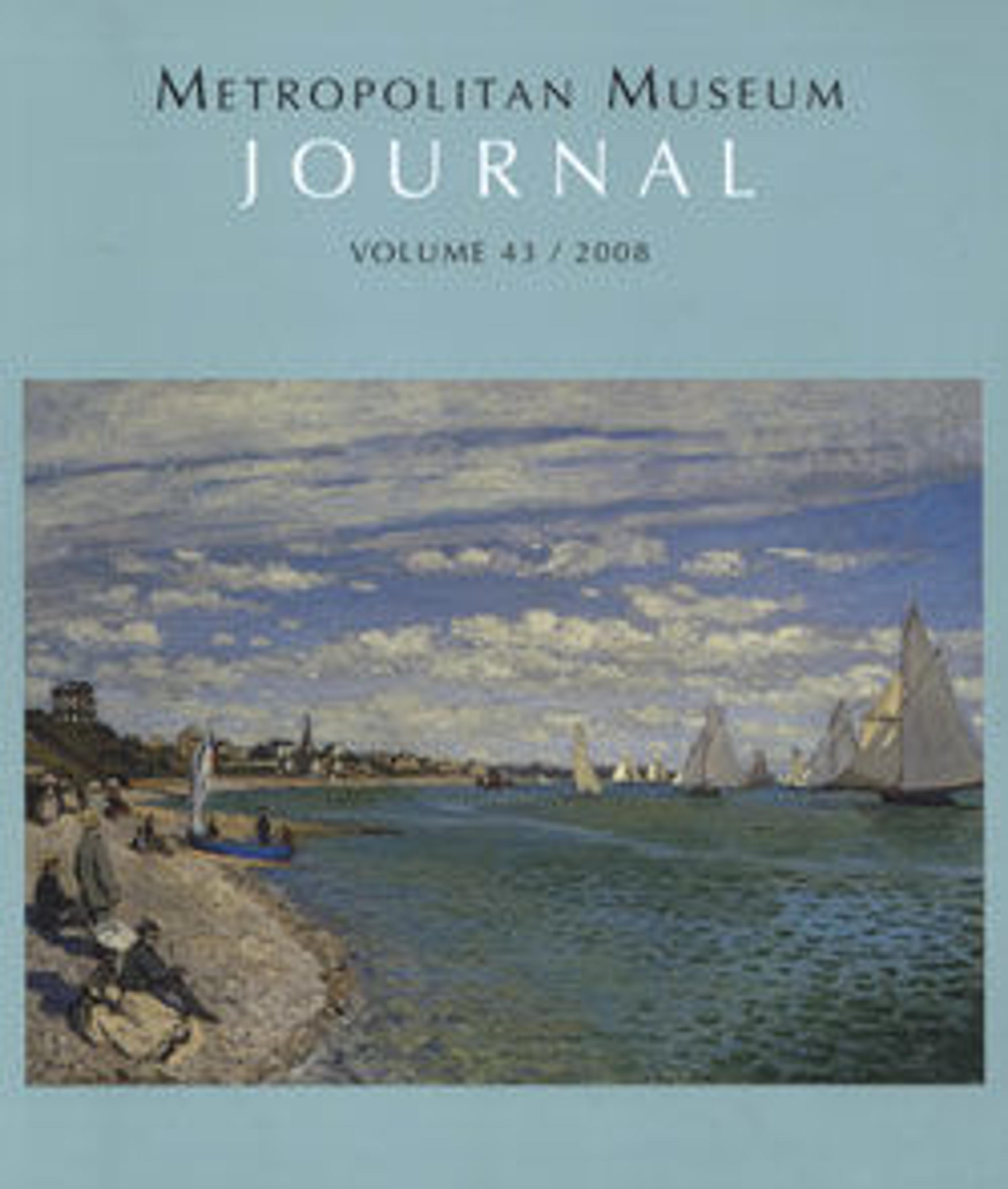Giraffe with Two Keepers
In 1414, a giraffe—a creature unknown in China at the time—was presented to the Yongle emperor (r. 1403–24) from the king of Bengal, which was a major trading center on the maritime route between the Arabian Peninsula and China. The Chinese immediately associated it with the qilin, an auspicious mythical creature. As a qilin only appears during the rule of a sagacious ruler, courtiers composed a number of sycophantic encomia celebrating the arrival of the giraffe as an omen that legitimized the reign of the Yongle emperor, who had usurped the throne. The many nearly identical paintings commemorating this event attest to the impact of this gift on the court. The giraffe also influenced the design of the qilin rank badge used for nobles.
The giraffe's arrival in China was occasioned by the extraordinary naval expeditions of Admiral Zheng He (1371–1433). Between 1405 and 1433, he commanded seven expeditions, the largest consisting of more than three hundred ships and 37,000 sailors, that reached as far as the east coast of Africa and established China's prestige throughout the region. The giraffe became an emblem of the Yongle emperor's diplomatic success. In this late version of the painting, a celebratory inscription by Shen Du (1357–1434) has been omitted, the giraffe has been given a geometric pattern of hexagonal spots, and central Asian grooms have been substituted for the original South Asian keepers.
The giraffe's arrival in China was occasioned by the extraordinary naval expeditions of Admiral Zheng He (1371–1433). Between 1405 and 1433, he commanded seven expeditions, the largest consisting of more than three hundred ships and 37,000 sailors, that reached as far as the east coast of Africa and established China's prestige throughout the region. The giraffe became an emblem of the Yongle emperor's diplomatic success. In this late version of the painting, a celebratory inscription by Shen Du (1357–1434) has been omitted, the giraffe has been given a geometric pattern of hexagonal spots, and central Asian grooms have been substituted for the original South Asian keepers.
Artwork Details
- Title: Giraffe with Two Keepers
- Artist: Unidentified artist (Chinese, 17th century or later)
- Period: Qing dynasty (1644–1911)
- Culture: China
- Medium: Ink and color on silk
- Dimensions: Image: 54 1/2 × 34 1/4 in. (138.4 × 87 cm)
Overall with mounting: 9 ft. 3 7/8 in. × 42 1/4 in. (284.2 × 107.3 cm)
Overall with knobs: 9 ft. 3 7/8 in. × 46 9/16 in. (284.2 × 118.3 cm) - Classification: Paintings
- Credit Line: From the Collection of A. W. Bahr, Purchase, Fletcher Fund, 1947
- Object Number: 47.18.21
- Curatorial Department: Asian Art
More Artwork
Research Resources
The Met provides unparalleled resources for research and welcomes an international community of students and scholars. The Met's Open Access API is where creators and researchers can connect to the The Met collection. Open Access data and public domain images are available for unrestricted commercial and noncommercial use without permission or fee.
To request images under copyright and other restrictions, please use this Image Request form.
Feedback
We continue to research and examine historical and cultural context for objects in The Met collection. If you have comments or questions about this object record, please complete and submit this form. The Museum looks forward to receiving your comments.
